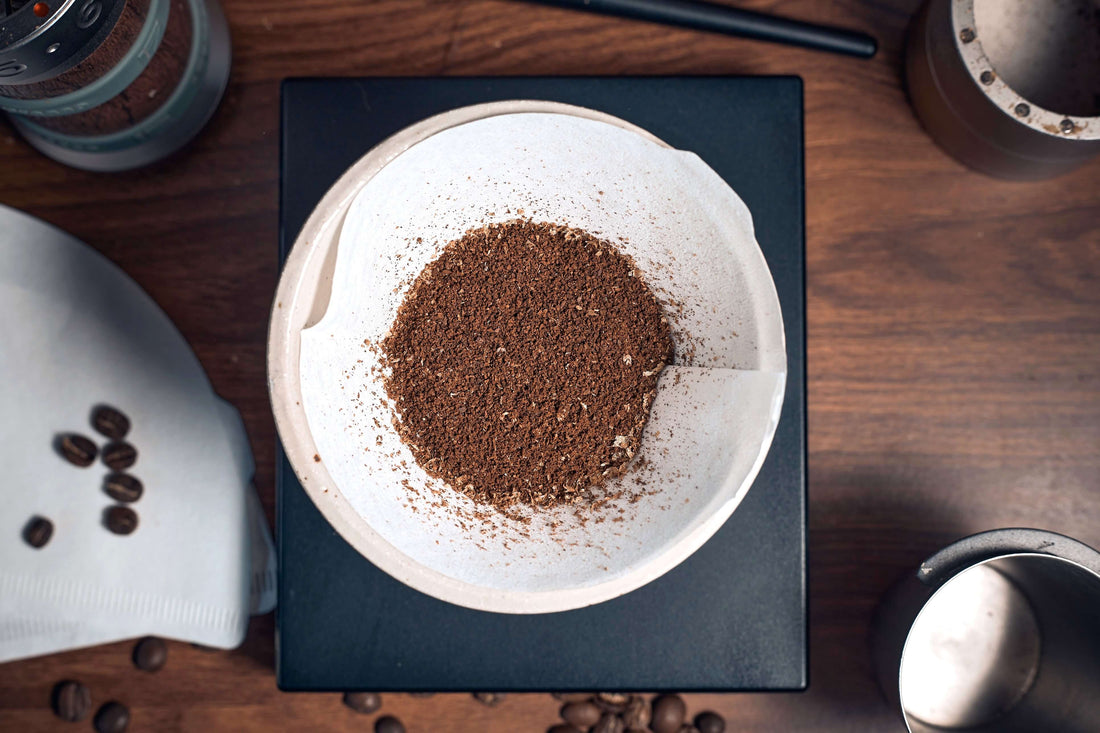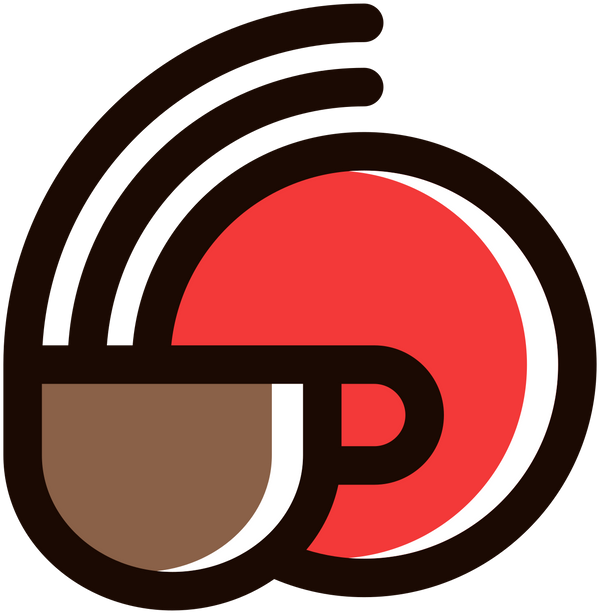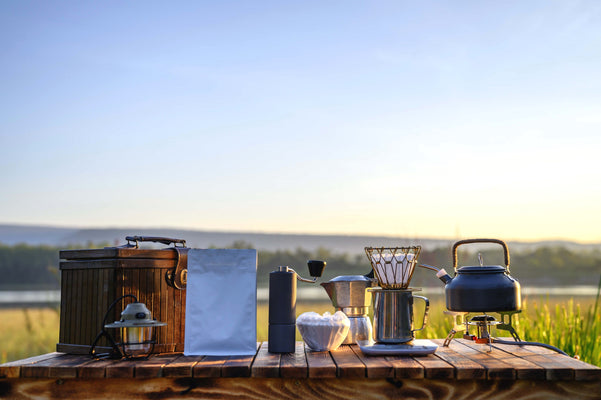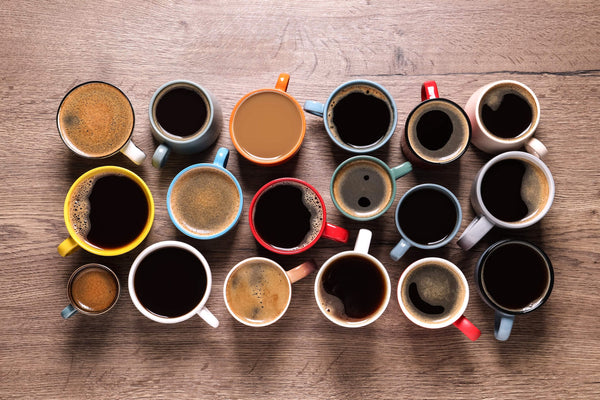
How Grind Size Affects Coffee Brewing
tai attitude6 min read
Grind size is one of the five key brewing variables. Baristas and homebrewers try and error when it comes to finding the best grind sizes.
As the grind size of choice used to brew coffee impacts the sensory experience in the cup so greatly, it can no doubt result in a cup of joy or, sometimes, frustration.
This article serves to explore the function of grind size in coffee brewing, providing insights into making their own best possible brew.
Surface area
Grinding coffee beans into ground coffee increases its surface area; this enables water to extract compounds from it easier, increasing extraction.
Think of grind size simply as the amount of surface area. During the coffee-brewing process, the extraction phase will always happen in the same way that the chemical composition of ground coffee gradually gets extracted by water.
Having more or less surface area determines the ease of compounds getting extracted during the extraction phase process.
For example,
When using whole coffee beans without grinding them, such as in an immersion brew like a French press, the steeping process will require a significant amount of time for the brew to achieve the point of enjoyment.
On average, a single coffee bean has a surface area of approximately 3.4 cm², allowing water to fully access its surface during the extraction phase.
Grind the same bean for the French press, which is a coarser setting and exposes approximately 1020 cm² of its surface area. Now, water has 200 times more surface area to access during the extraction phase.
If we grind the same bean for espresso, typically at a much finer setting, the exposed surface area will then expand to approximately 3400 cm². Now water has 1000 times more surface area to access during the extraction phase.
 An illustration of surface area, from the coarser grind on the left to the finer grind on the right.
An illustration of surface area, from the coarser grind on the left to the finer grind on the right.
Grinding increases the particle count, resulting in a significant increase in overall surface area. This is true with every small change in grind size setting.
In short, grinding is determining the amount of surface area, which is absolutely essential for both deliciousness and efficiency.
The next question is, how much surface area do we need? How much do we know we have? To answer these, let's consider the grind size's relationship with equipment and brew time in the following section.
Intertwined with equipment and brew time
Deciding the grind size is heavily dependent on the equipment of choice, as each piece of coffee equipment was engineered with a range of grind sizes in mind. This limitation is beneficial to baristas as it narrows the scope of available grind sizes, making it relatively easier to figure out after a few uses of such equipment.
 An illustration of ranges of grind size settings for some of the more popular coffee preparation methods.
An illustration of ranges of grind size settings for some of the more popular coffee preparation methods.
Other consideration in deciding grind size are the barista's choice of ingredients (coffee bean and water) and skills (recipe and execution). Particularly, the brew time is something that the barista must correlate to the grind size.
Since grinding finer increases surface area, thus increasing extraction, such efficiency now necessitates a shorter brew time. Vice versa.
Resistance factor (percolation brews only)
For percolation brews, the grind size of choice will further determine the resistance of the coffee bed (or espresso puck).
Percolation is when the extraction phase happens, where water is slowly added to pass through the ground coffee via both gravity and pressure.
Generally, the finer the grind size, the higher the resistance.
Such increased resistance will result in a longer brew time and a higher risk of channelling.
As such, the resistance factor even further limits the range of grind sizes.
For immersion brews, they are not affected by neither the resistance factor nor channelling.
Immersion (a.k.a. steeping or infusion) is where water is completely steeped with ground coffee from the beginning to the end of the extraction phase.
Some of the coffee preparation methods that fundamentally use percolation include pour-overs, percolators, Moka pots, espresso, etc. If you are not sure which one of the brew method your equipment is based on, please read this article.
Strength and extraction aspects
Strength
Strength in the context of coffee refers to how strong or weak the coffee beverage is. It is the relationship between the dissolved compounds of ground coffee and water.
Using a finer grind size in coffee brewing results in an increase in strength in the cup. Vice versa.
It turns out that the increase or decrease in surface area greatly determines the total number of dissolvable compounds to be exposed for water to extract in a given time. In other words, assuming the brew ratio and brew time are constants, the grind size of choice either concentrates or dilutes the brewed coffee.
Extraction
Extraction refers to how much has been extracted from ground coffee during the coffee-brewing process. It represents the overall flavour attributes of the cup.
Using a finer grind size in coffee brewing results in an increase in extraction, skewing brewed coffee towards more bitterness. The opposite also holds true.
This is because the extraction phase always happens in one way, in an overlapping order, where ground coffee dissolves its available compound in water based on its size and solubility. Altering grind size (surface area) will not change the order of extraction but the total, which consequently shifts the overall flavour attributes.
Since what we are striving for in coffee brewing is to end the brew at the ideal extraction range (neither under- nor over-extraction) for deliciousness, the key is to understand and decide how much surface area to use for the brew.
Using sensory information as a guide, perceive both the strength and extraction aspects of the brewed coffee. If necessary, alter the grind size for the next brew accordingly, as follows:
Using a finer grind, which exposes more of the surface area of ground coffee to water, thereby increases both strength and extraction in the cup.
The brewed coffee will skew towards being thicker (higher strength) and more bitter (higher extraction) at the same time.
Using a coarser grind, which exposes less of the surface area of ground coffee to water, thereby decreases both strength and extraction in the cup.
The brewed coffee will skew towards being thinner (lower strength) and more sour (lower extraction) at the same time.
In a nutshell, grind size is a great variable in the arsenal of a barista for simultaneously increasing or decreasing both strength (thickness or thinness) and extraction (acidity, sweetness, bitterness, and flavour notes). Grind size is the only one of the five coffee brewing variables that uniquely does so.
In summary
The best coffee grind size is one that brews the best-tasting coffee. Such a best-grind size varies; it will have to be accessed through the barista's understanding, awareness, and adaptability.
The range of grind sizes is limited by the equipment of choice, followed by the ingredient of choice (coffee bean and water) and the skills (recipe and execution) of the barista. On the upside, this also means finding the best grind size should not be too challenging.
In essence, grind size is the determinant of surface area; it impacts the extraction phase and thus affects coffee quality in both strength and extraction aspects.



